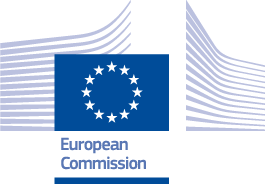Large-scale interactive analysis of networks in the human brain
Santiago Brandi (PI), Paul Verschure, Francisco Santos
Using the integrated brain data modelling and visualization technologies of EOD in the virtual reality environment XIM/brainx3.com, we propose to build a unified simulation platform for reconstruction and analysis of brain dynamics and connectivity at multiple scales for the human brain in health and disease (BrainX3). We will provide a unified analysis-synthesis framework for multi-scale and brain data by integrating different datasets and platforms available within the network. Furthermore, we will advance a novel immersive brain data exploration environment for education and research. Moreover, we will advance the alignment of structural and functional brain datasets. We plan to increase the capability to infer causal structure in brain connectome data sets through the augmentation of empirical data with simulated neuronal structures with emphasis on the thalamus, basal ganglia and cerebellum. Simulations will be based on dynamic mean field methods in close collaboration with UPF-Deco as well as graph and information theoretic tools. We will in particular address the question of how discrete lesions due to stroke affect the global (re)organization of the neocortex and the thalamo-cortical system.
Our work has focused on how the homeostatic regulation of excitatory-inhibitory (E-I) balance at the mesoscale shapes macro-scale brain dynamics and networks. We have approached this challenge through the lens of whole-brain modeling with the goal of studying the key features allowing models to reproduce resting-state network dynamics accurately. In addition, we aim to develop models that can dynamically adapt to perturbations such as focal lesions. Within this framework, we emphasize the role of local E-I homeostasis in supporting large-scale cortical reorganization after lesion, advancing it as a relevant target for understanding recovery after stroke.
In our first study, published in Neuroimage in collaboration with our partners at University College London, we compare the performance of two whole-brain models with different features. We demonstrate the relevance of E-I balance in whole-brain models in allowing the emergence of relevant network dynamics across timescales, but particularly in the ultra-slow oscillations characteristic of resting-state fMRI.

Our second study, published in PLOS Computational Biology, shows that cortical reorganization following a focal lesion can be understood as an emergent property of the restoration of local balance. In addition, we show that the changes in local excitability, required to achieve this recovery, are supported by empirical data and, on the other hand, might inadvertently increase the propensity of stroke patients to develop side effects such as seizures.


Currently, we are working on a collaborative effort with our partners at the Universities of Oxford and Padova to employ state-of-the-art methods of probing brain dynamics (HMM-MAR) to investigate longitudinal changes in network dynamics during stroke recovery. We aim to relate such changes to the recovery of higher-order cognitive functions, such as language and memory, and to pinpoint the relationship between the recovery of E-I balance and behavior.
Last update; August 7, 2023

 European School of Network Neuroscience
European School of Network Neuroscience